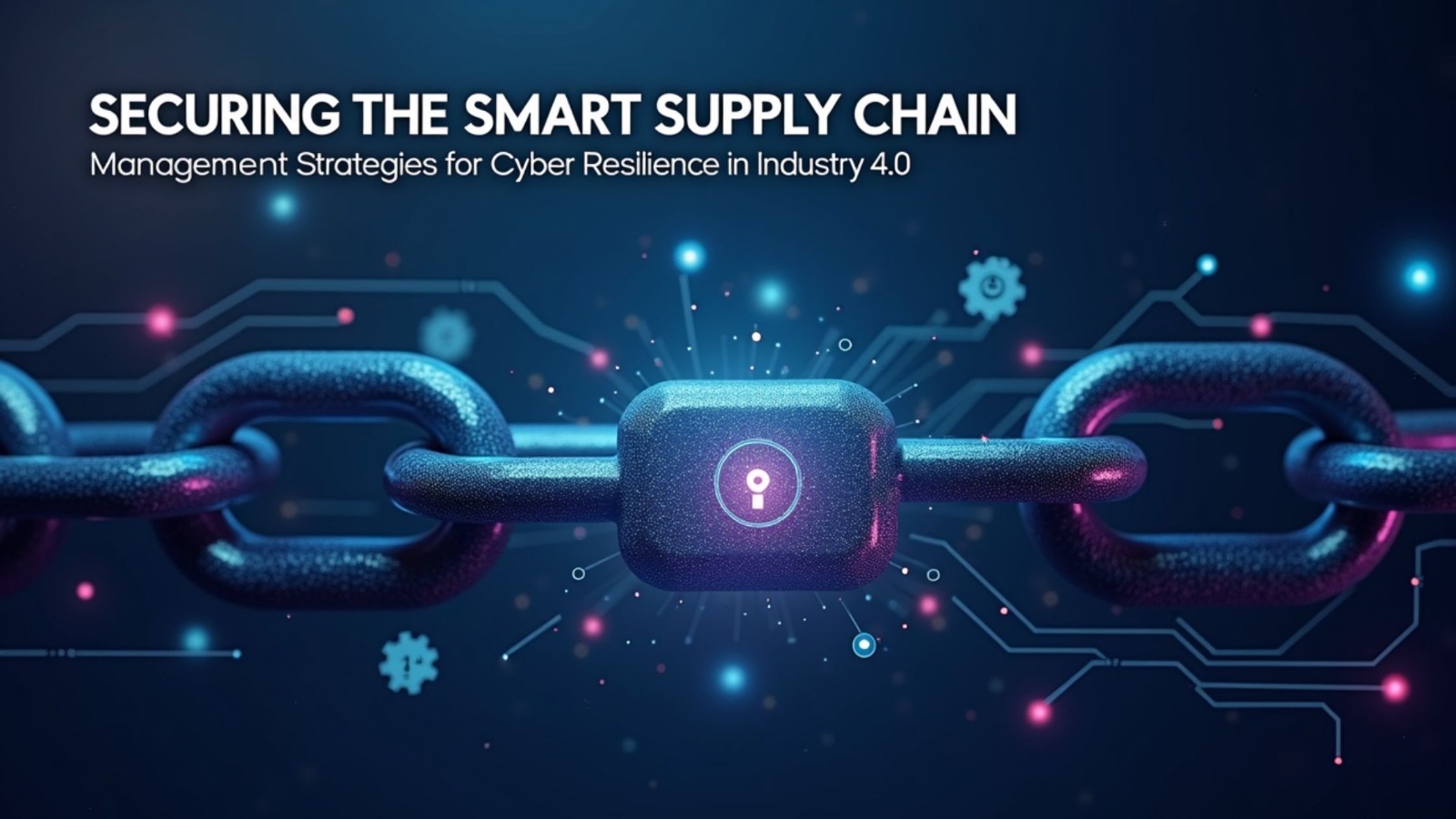
SECURING THE SMART SUPPLY CHAIN: MANAGEMENT STRATEGIES FOR CYBER RESILIENCE IN INDUSTRY 4.0
- by phdblog
Introduction
The emergence of Industry 4.0 has transformed supply chain management through the integration of advanced technologies like IoT, AI, and blockchain. These innovations have made supply chains smarter, more efficient, and highly interconnected. However, this digital transformation has also exposed supply chains to an increased risk of cyber threats. With sensitive data, critical operations, and global interdependencies at stake, cyber resilience has become a cornerstone of modern supply chain management. This blog explores the cybersecurity challenges facing smart supply chains and outlines effective management strategies to ensure resilience in the face of evolving threats.
Understanding the Cybersecurity Challenges
Smart supply chains rely on a network of interconnected devices, systems, and stakeholders. This interconnectedness increases the attack surface, making supply chains vulnerable to a wide range of cyber threats.
- IoT Vulnerabilities: IoT devices collect and share critical data across supply chains. However, the absence of strong security protocols makes them vulnerable targets for hackers.
- Data Breaches: Sensitive supply chain data, including customer information and trade secrets, can be compromised through cyberattacks, leading to financial losses and reputational damage (Basuchoudhary & Searle, 2019).
- Ransomware Attacks: Cybercriminals exploit vulnerabilities to encrypt critical data and demand ransom, disrupting operations and causing significant financial strain.
- Third-Party Risks: Supply chains often involve multiple vendors and partners. A weak link in the cybersecurity of any third party can jeopardize the entire supply chain network.
The Role of Management in Cyber Resilience
Effective cybersecurity in supply chains requires proactive management. Organizations must adopt strategies that not only mitigate risks but also ensure swift recovery from potential attacks.
- Developing a Cybersecurity Framework
Managers should implement a comprehensive cybersecurity framework that aligns with industry standards, such as ISO 27001 or NIST. This framework must include guidelines for risk assessment, incident response, and continuous monitoring. - Conducting Risk Assessments
Regular risk assessments are essential for identifying vulnerabilities in the supply chain (Choudhary et al., 2022). By evaluating potential threats and their impact, managers can prioritize resources to safeguard critical assets. - Enhancing Employee Awareness
Human error is one of the leading reasons for cyber incidents. Conducting regular training sessions on cybersecurity best practices ensures that employees understand their role in maintaining the integrity of the supply chain (Admass et al., 2024). - Implementing Advanced Technologies
- Blockchain: Blockchain enhances transparency and security by providing an immutable record of transactions across the supply chain (Sunny et al., 2020).Artificial Intelligence: AI-powered tools can detect anomalies and predict potential threats, enabling preemptive action.
- Encryption and Multi-Factor Authentication: These technologies secure data in transit and prevent unauthorized access.
- Collaborating with Third Parties
Effective cybersecurity requires collaboration across the entire supply chain network. Managers should establish clear cybersecurity expectations for partners and vendors through contracts and regular audits. - Incident Response Planning
An incident response plan outlines the steps to be taken in case of a cyberattack. This plan should incorporate communication protocols, data backup methods, and recovery timelines to reduce downtime and mitigate losses.
Case Studies: Lessons from Real-World Incidents
- Maersk’s Ransomware Attack
In 2017, shipping giant Maersk suffered a ransomware attack that disrupted its operations and cost the company $300 million. The incident highlighted the importance of robust backup systems and real-time threat monitoring. - Target’s Data Breach
A third-party vendor’s weak cybersecurity led to the breach of Target’s payment systems in 2013, exposing the personal information of millions of customers. This incident underscores the essential significance of effective third-party risk management.
The Future of Cyber-Resilient Supply Chains
Future trends in securing smart supply chains include:
- Zero Trust Architecture: This approach assumes no entity, internal or external, can be trusted, ensuring continuous verification of access requests.
- Quantum Cryptography: With the rise of quantum computing, traditional encryption methods will become obsolete. Organizations must invest in quantum-safe encryption technologies (How & Cheah, 2023).
- Supply Chain Digital Twins: Digital twins can simulate supply chain operations, helping managers identify vulnerabilities and test cybersecurity measures in a virtual environment.
Conclusion
In the rapidly evolving world of Industry 4.0, cybersecurity goes beyond an IT issue; it has become a crucial management priority. Securing the smart supply chain requires a multi-faceted approach involving advanced technologies, employee training, and collaborative partnerships. By prioritizing cyber resilience, organizations can protect their operations, build trust among stakeholders, and ensure sustained growth in an increasingly digitalized world. As technology continues to evolve, proactive management will remain the key to navigating cybersecurity challenges in smart supply chains.
References
Admass, W. S., Munaye, Y. Y., & Diro, A. A. (2024). Cyber security: State of the art, Challenges and Future Directions. Cyber Security and Applications, 2(2), 100031.
Basuchoudhary, A., & Searle, N. (2019). Snatched secrets: Cybercrime and trade secrets modelling a firm’s decision to report a theft of trade secrets. Computers & Security, 87, 101591.
Choudhary, N. A., Singh, S., Schoenherr, T., & Ramkumar, M. (2022). Risk assessment in supply chains: a state-of-the-art review of methodologies and their applications. Annals of Operations Research, 322. Springer.
How, M.-L., & Cheah, S.-M. (2023). Business Renaissance: Opportunities and Challenges at the Dawn of the Quantum Computing Era. Businesses, 3(4), 585–605.
Sunny, J., Undralla, N., & Pillai, V. M. (2020). Supply chain transparency through blockchain-based traceability: An overview with demonstration. Computers & Industrial Engineering, 150(150), 106–895.
Introduction The emergence of Industry 4.0 has transformed supply chain management through the integration of advanced technologies like IoT, AI, and blockchain. These innovations have made supply chains smarter, more efficient, and highly interconnected. However, this digital transformation has also exposed supply chains to an increased risk of cyber threats. With sensitive data, critical operations,…
